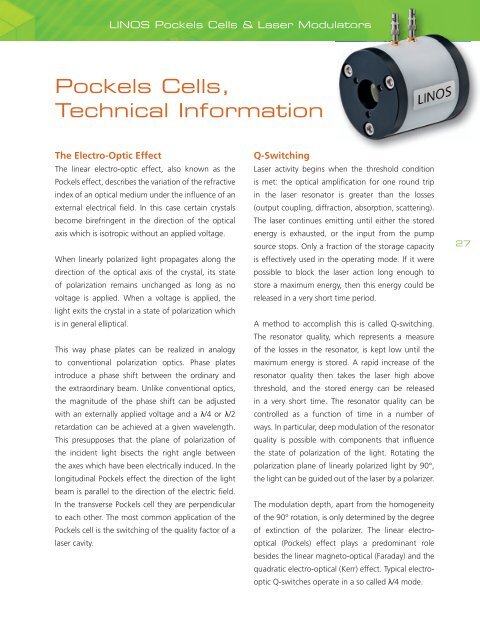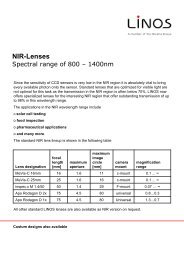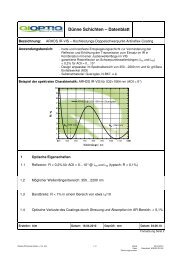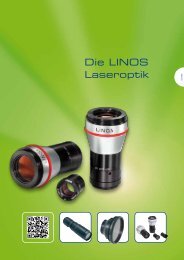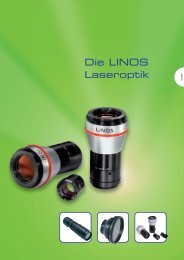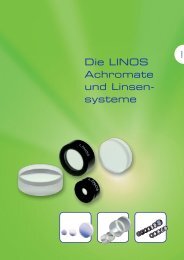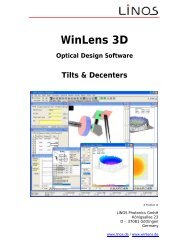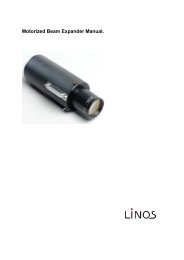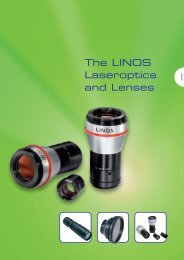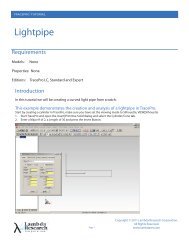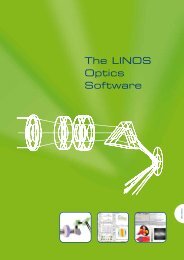Crystal Technology - Qioptiq Q-Shop
Crystal Technology - Qioptiq Q-Shop
Crystal Technology - Qioptiq Q-Shop
- No tags were found...
Create successful ePaper yourself
Turn your PDF publications into a flip-book with our unique Google optimized e-Paper software.
LINOS Pockels Cells & Laser ModulatorsPockels Cells,Technical InformationThe Electro-Optic EffectThe linear electro-optic effect, also known as thePockels effect, describes the variation of the refractiveindex of an optical medium under the influence of anexternal electrical field. In this case certain crystalsbecome birefringent in the direction of the opticalaxis which is isotropic without an applied voltage.When linearly polarized light propagates along thedirection of the optical axis of the crystal, its stateof polarization remains unchanged as long as novoltage is applied. When a voltage is applied, thelight exits the crystal in a state of polarization whichis in general elliptical.This way phase plates can be realized in analogyto conventional polarization optics. Phase platesintroduce a phase shift between the ordinary andthe extraordinary beam. Unlike conventional optics,the magnitude of the phase shift can be adjustedwith an externally applied voltage and a λ/4 or λ/2retardation can be achieved at a given wavelength.This presupposes that the plane of polarization ofthe incident light bisects the right angle betweenthe axes which have been electrically induced. In thelongitudinal Pockels effect the direction of the lightbeam is parallel to the direction of the electric field.In the transverse Pockels cell they are perpendicularto each other. The most common application of thePockels cell is the switching of the quality factor of alaser cavity.Q-SwitchingLaser activity begins when the threshold conditionis met: the optical amplification for one round tripin the laser resonator is greater than the losses(output coupling, diffraction, absorption, scattering).The laser continues emitting until either the storedenergy is exhausted, or the input from the pumpsource stops. Only a fraction of the storage capacityis effectively used in the operating mode. If it werepossible to block the laser action long enough tostore a maximum energy, then this energy could bereleased in a very short time period.A method to accomplish this is called Q-switching.The resonator quality, which represents a measureof the losses in the resonator, is kept low until themaximum energy is stored. A rapid increase of theresonator quality then takes the laser high abovethreshold, and the stored energy can be releasedin a very short time. The resonator quality can becontrolled as a function of time in a number ofways. In particular, deep modulation of the resonatorquality is possible with components that influencethe state of polarization of the light. Rotating thepolarization plane of linearly polarized light by 90°,the light can be guided out of the laser by a polarizer.The modulation depth, apart from the homogeneityof the 90° rotation, is only determined by the degreeof extinction of the polarizer. The linear electrooptical(Pockels) effect plays a predominant rolebesides the linear magneto-optical (Faraday) and thequadratic electro-optical (Kerr) effect. Typical electroopticQ-switches operate in a so called λ/4 mode.27


